From daily health checkups to carefully curated diets, primates at Cuc Phuong National Park receive top-tier care. The red-shanked douc langur, a symbol of Vietnam’s rich biodiversity, remains one of the center’s most treasured species.
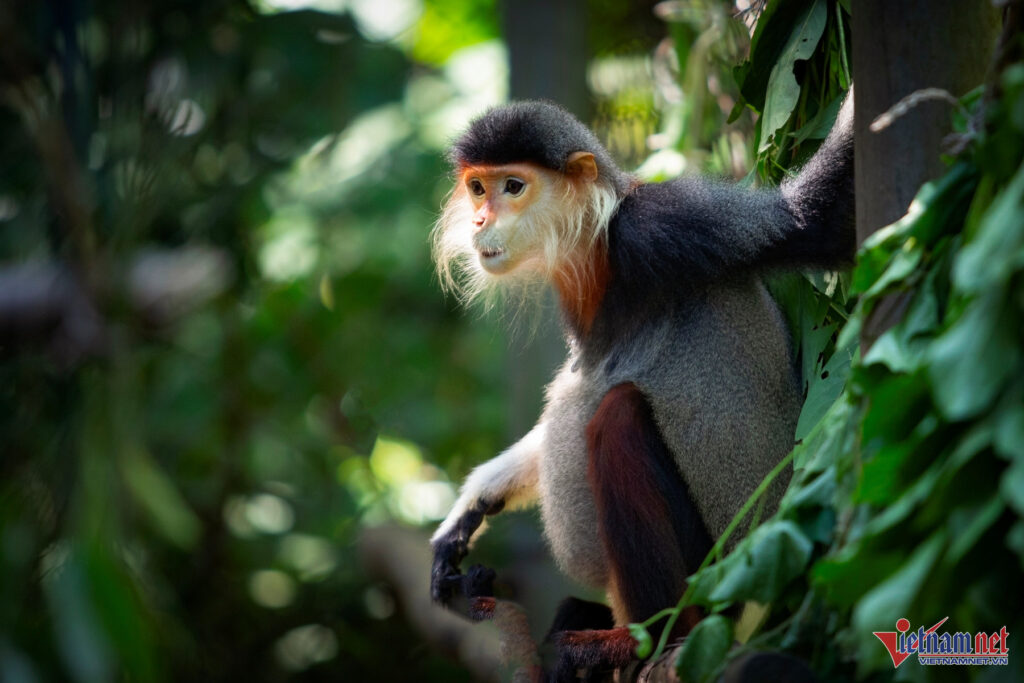
The Endangered Primate Rescue Center (EPRC) at Cuc Phuong National Park is home to 14 red-shanked douc langurs. Photo: NL
The red-shanked douc langur, a highly endangered species with vibrant colors, has earned the title “queen of primates.”
At the Endangered Primate Rescue Center (EPRC) in Cuc Phuong National Park, conservationists are caring for 231 primates from 14 different species, all of which are listed in the Red Book of endangered species in urgent need of protection.
A special focus at the center is the care of 14 red-shanked douc langurs, including six males and eight females. Known for their striking beauty and vivid coloration, they are considered the most visually stunning among all primates.
Do Dang Khoa, an EPRC conservationist, explained that red-shanked douc langurs live in social groups of three to eight individuals, with a dominant male leading the group. They display a strong social bond, spending much of their time grooming and cleaning each other’s fur as a form of social interaction.
A rare and carefully nurtured species
The red-shanked douc langurs at EPRC are in good health and developing well. They reach adulthood at around five years old, and each female gives birth to one infant per pregnancy, with an interval of two to two and a half years between births.
Their daily diet consists mainly of leaves and bitter or astringent fruits, including starfruit leaves, hibiscus, magnolia, camphor, and fig fruits. Caretakers collect and prepare these foods in carefully balanced portions, ensuring each langur receives a mix of three to four different types of leaves per meal to meet their nutritional needs.
Newborn and juvenile langurs receive care and supervision from all the adults in the group. Rescued infants at the center undergo medical checkups and health monitoring and are bottle-fed with specially formulated milk by veterinarians.
Veterinary checkups for primates at the center are conducted annually, with each individual undergoing ultrasound scans, X-rays, and blood tests. Any primates showing signs of illness or psychological distress are transferred to the on-site clinic for further observation and treatment.
A conservation success story
EPRC was established in 1993 as a collaboration between Cuc Phuong National Park and the Frankfurt Zoological Society of Germany. Since 2013, the center has operated under a cooperative management agreement between Cuc Phuong National Park and Leipzig Zoo, Germany.
Each day, center staff travel across various locations to collect leaves and other necessary food supplies for the primates. Providing a consistent and nutrient-rich diet is crucial for their well-being and development.
The red-shanked douc langur is known by many names across different regions, including the seven-colored monkey, soldier monkey, and hidden-face monkey.

Red-shanked douc langurs are known as the “queen of primates” due to their striking appearance. Photo: CP - NL
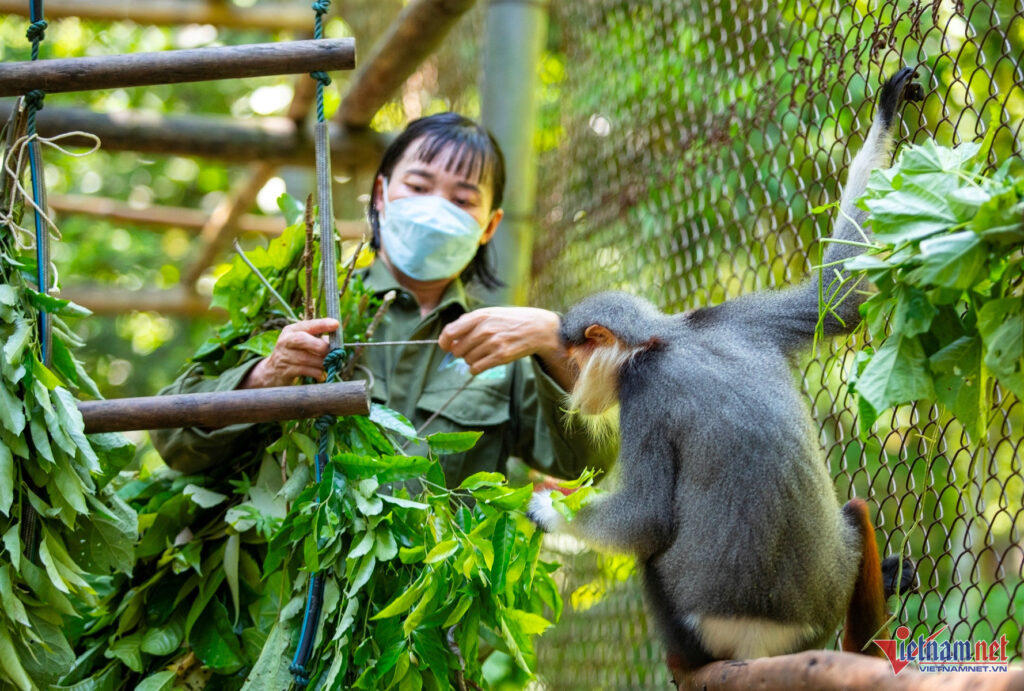
The langurs primarily feed on leaves, which are carefully selected by the staff. Photo: NL
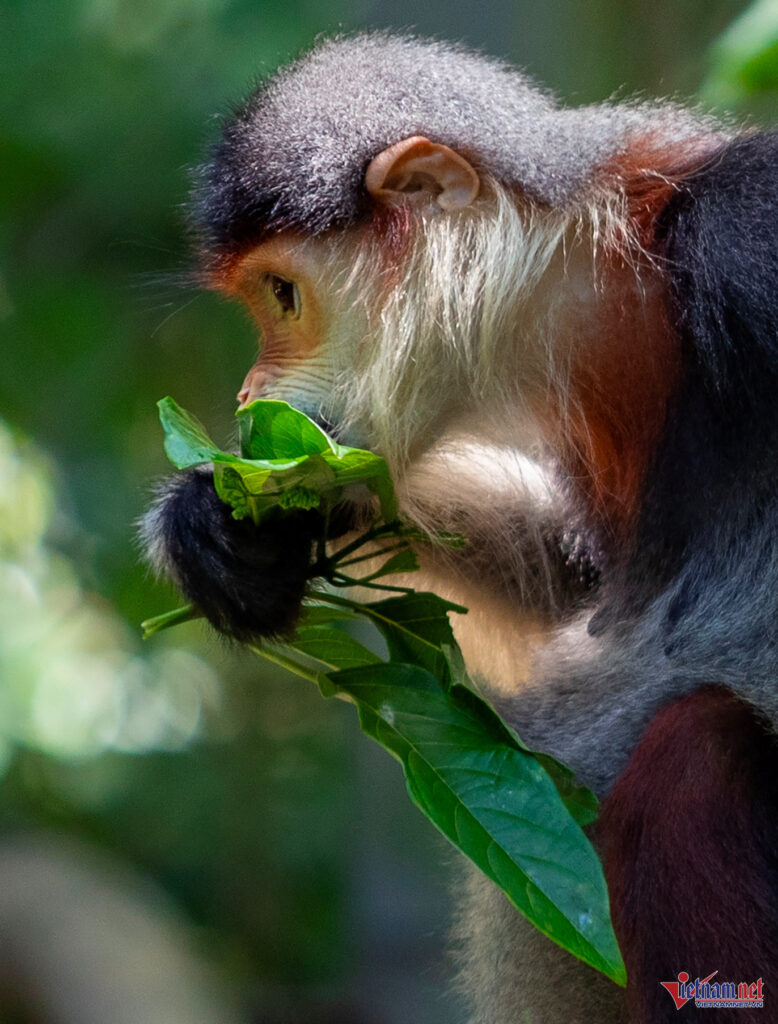
The red-shanked douc langur is considered the “star species” at Cuc Phuong National Park. Photo: NL
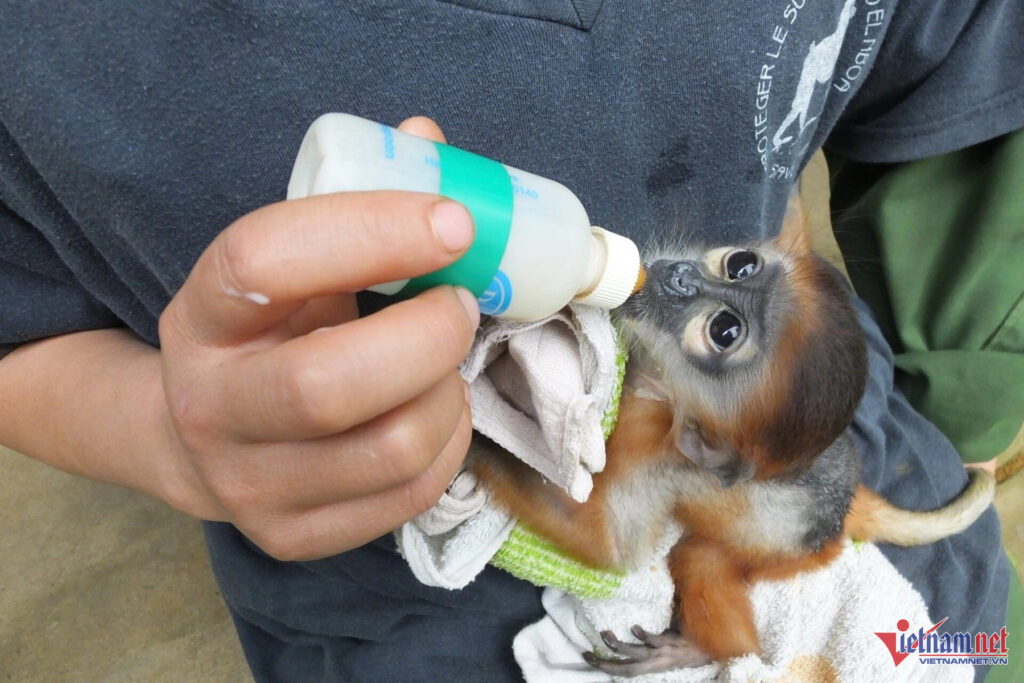
Newborn langurs rescued by the center receive medical checkups, supervision, and bottle-feeding. Photo: CP

Carefully preparing daily food rations is a vital part of ensuring the health and survival of these primates. Photo: NL
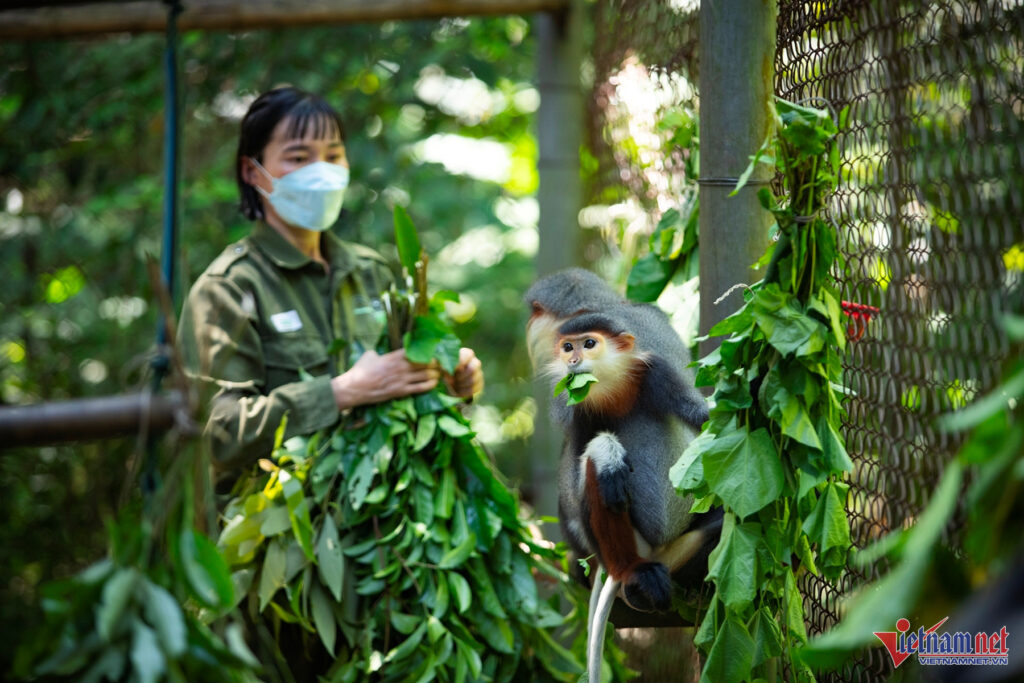
Conservation staff travel long distances to gather leaves and food supplies for the primates. Photo: NL
Tran Nghi - Duy Tuan
















